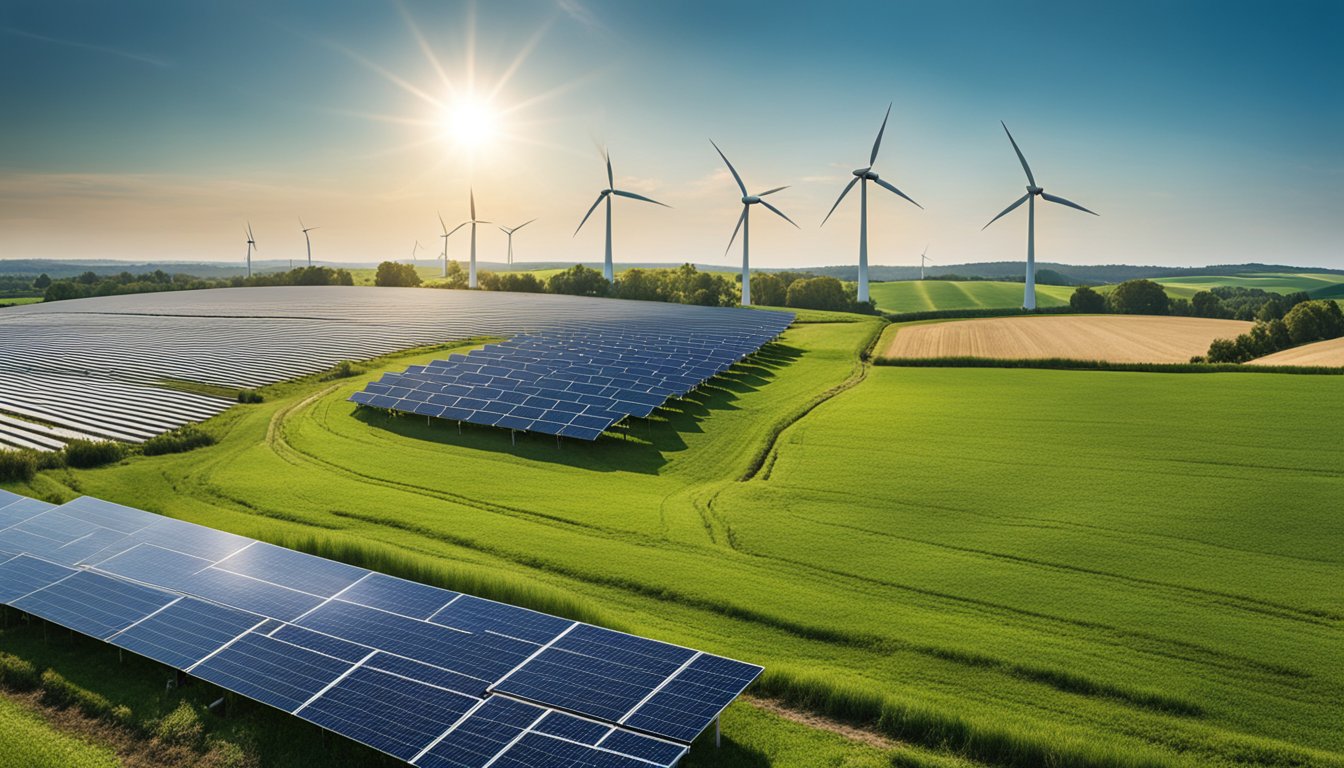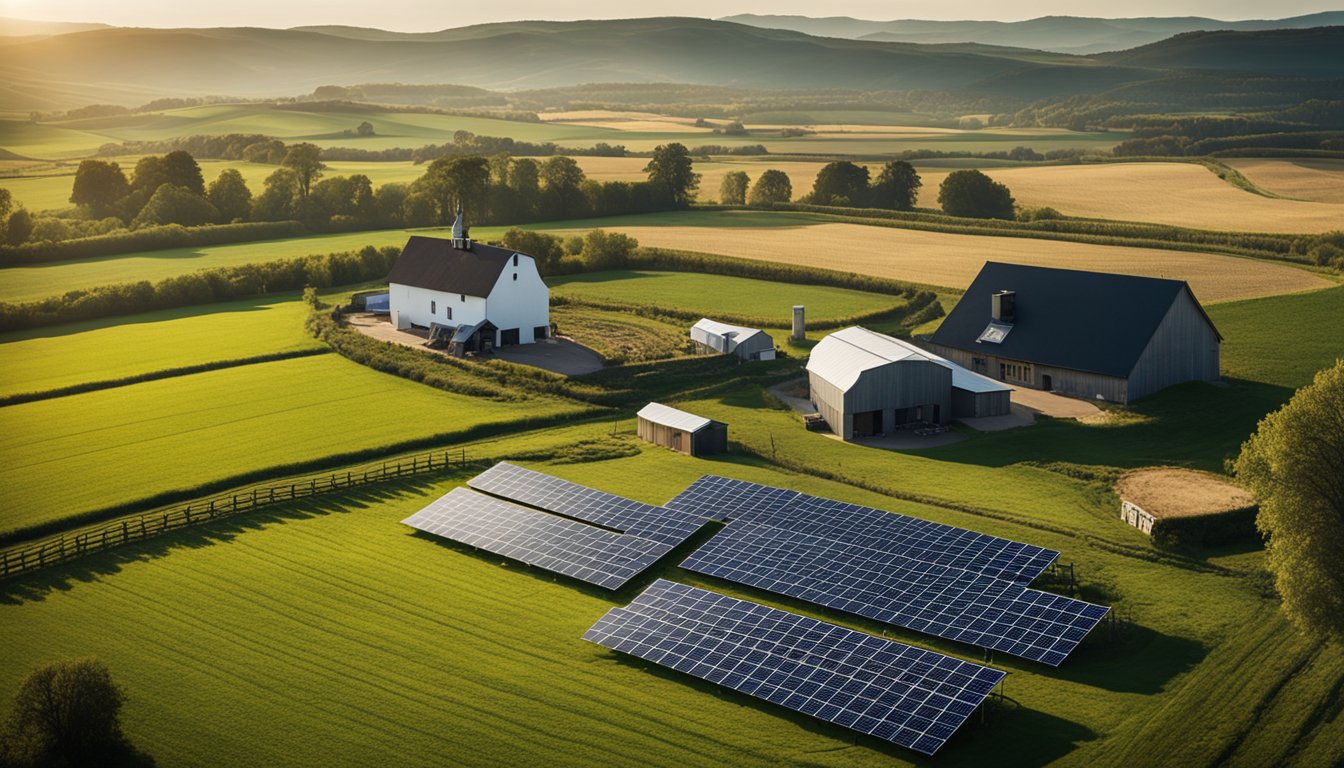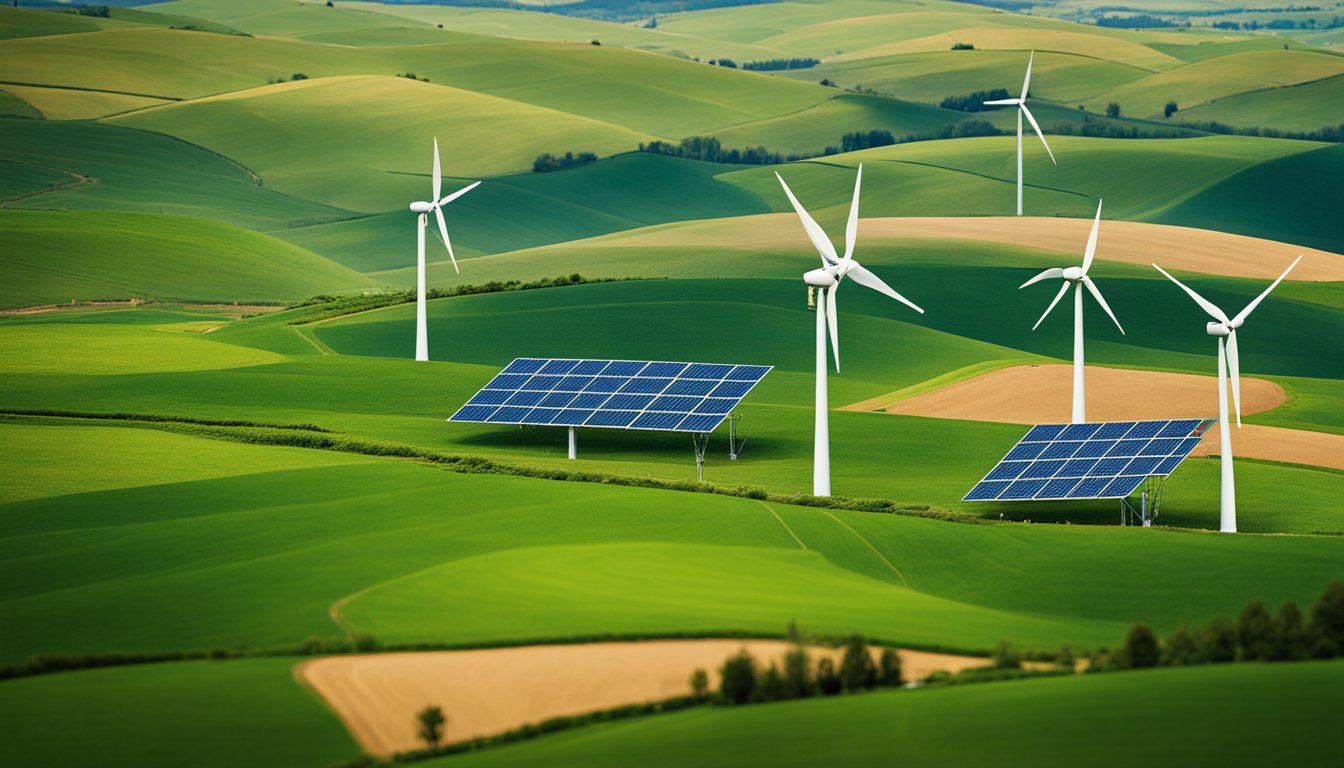Late updated: 04 Jan 2025 13:01
Written by: Oliver Bennett
Maximising Renewable Energy for UK Farms: Strategies for Sustainable Growth
Maximising renewable energy for UK farms offers not just an economic opportunity but also a path toward sustainability and energy security. UK farms are uniquely positioned to harness the power of renewable sources like solar, wind, and biomass. By integrating renewable energy systems, farms can significantly reduce their carbon footprint and lead the charge toward the nation’s net-zero targets.

The potential of solar energy on agricultural land is especially promising. With bifacial panels that utilise both sides for energy absorption, we can maximise energy generation on limited land areas. As we adapt these technologies, our farms do more than just produce food—they become pivotal in the fight against climate change.
The design, construction, and management of these systems require thoughtful planning and investment. Implementing these renewables not only diversifies farm income but also empowers rural communities. As a result, we create a more resilient agricultural sector that supports the wider rural economy and contributes to a sustainable future.
Key Takeaways
- UK farms play a crucial role in achieving net-zero targets through renewable energy.
- Solar energy and bifacial panels are key to maximising farm energy outputs.
- Renewable systems boost farm resilience and support rural economic growth.
Renewable Energy Potential and Strategies for UK Farms
Farms across the UK have the opportunity to enhance their sustainability and profitability by integrating renewable energy solutions. These strategies not only support the transition to net zero but also take advantage of government incentives and local planning resources.
Evaluating the Scope for Renewable Energy on Agricultural Land
Before implementing renewable energy solutions, it's essential to assess the compatibility of technologies like solar farms, wind power, and biomass with farming operations. Solar panels, particularly, can be installed on rooftops or less productive land without disrupting agricultural activities. Wind power offers significant potential, particularly in rural areas with high wind speeds, requiring proper site evaluation and technology selection.
Biomass, which involves converting organic materials into energy, suits farms with livestock and crop waste. These projects can enhance the value of waste products and improve energy efficiency on the farm. Regular evaluations and feasibility studies are critical in determining the optimal mix of renewable technologies to maximise energy production while maintaining agricultural productivity.
Moving Towards Net Zero: Integrating Farming and Clean Energy
Integrating clean energy into farming can significantly contribute to national net-zero ambitions. Heat pumps provide an efficient way to regulate temperatures in farm buildings and greenhouses, reducing reliance on fossil fuels. Heat pump systems utilise the earth's natural heat, promoting sustainable energy usage.
By adopting renewable energy technologies, farms can reduce greenhouse gas emissions and enhance energy independence. This transition may involve strategic planning to align with crop cycles and livestock management, ensuring minimal disruption. Furthermore, the combination of solar, wind, and biomass can create a decentralised energy system within the farm, supporting wider environmental goals.
Government Incentives and Local Planning for Renewable Initiatives
The UK Government offers various incentives, such as the Renewable Heat Incentive, to encourage farms to invest in renewable energy installations. These incentives can significantly offset initial costs, making sustainable investments more appealing. Navigating the landscape of planning permission is crucial, as local planning authorities have specific requirements for approving renewable energy projects.
Building relationships with local councils and understanding planning regulations are pivotal in expediting approvals. Adequate planning not only secures necessary permissions but also ensures the long-term sustainability of energy projects. Leveraging both financial incentives and local expertise can facilitate the seamless integration of renewables into farming practices, driving progress toward cleaner energy solutions on UK farms.
Design, Construction and Management of Farm-Based Renewable Energy Systems

In farming, designing efficient energy systems is essential for sustainable operations. By focusing on efficient construction and careful management, we can maximise the benefits of renewable energy on UK farms.
Best Practices for Site Design and Solar/Wind Farm Installation
When designing renewable energy systems on farms, choosing suitable sites is crucial. For ground-mounted solar farms, selecting areas with optimal sunlight exposure while avoiding prime agricultural land is important. Offshore wind farms offer excellent opportunities when inland wind speeds are insufficient.
Construction involves coordinating with specialists to ensure proper solar panel and wind turbine installation. Local regulations must be considered to minimise environmental impact and support existing land use. Natural Capital assessments help evaluate the potential benefits and ensure compatibility with farm activities.
Operation and Maintenance of On-Farm Renewable Energy Installations
Once operational, regular maintenance of energy installations is key to sustained performance. Solar installations require cleaning and inspections to maintain efficiency. Components like inverter systems need regular checks to prevent downtime.
Monitoring energy output through automated systems allows us to detect issues early. Additionally, understanding the seasonal variability in energy generation helps in managing energy consumption effectively. Structured maintenance schedules ensure that both solar and wind facilities operate smoothly, maximising their return on investment.
Ensuring Biodiversity and Soil Health During Energy Projects
Preserving biodiversity and maintaining soil health is vital in energy projects. Solar farms can integrate wildlife corridors to support local fauna. During construction, strategies like minimal soil disturbance and runoff management protect the environment.
Incorporating native plant species around energy installations can enhance biodiversity. These plants also improve soil health by promoting natural processes. Monitoring biodiversity and soil quality ensures these practices align with farm sustainability goals. We can then adjust management practices to foster a healthy ecosystem alongside energy production.
Decommissioning and Repurposing Land Post-Energy Generation
Decommissioning energy systems should focus on responsible land restoration. Solar panels and turbine components must be recycled or disposed of according to environmental standards. Restoring land to its original state or repurposing it for other agricultural uses is essential.
When planning, we consider future land use possibilities. Some areas may be suitable for new crops or biodiversity projects post-decommissioning. Transparent decommissioning plans, developed from the outset, ensure that the land continues to provide value following energy generation.
Frequently Asked Questions

For UK farms, adopting renewable energy not only supports sustainability but also enhances energy security and reduces costs. By exploring efficient solutions like solar, wind, and biogas, and understanding government incentives and cost implications, farms can effectively integrate these technologies.
What are the most efficient renewable energy solutions for UK farms?
Solar power remains a top choice due to its falling costs and ease of installation. Biomass, including woodchip boilers and crop residue fuels, also offers a reliable energy source. Wind energy provides another effective solution, especially in regions with consistent wind patterns.
How can UK farmers implement solar power to maximise energy production?
Installing rooftop solar panels or developing small-scale solar farms optimises solar energy use. It's critical to assess site-specific factors, such as solar exposure and available space, to ensure maximum efficiency and energy yield.
What government incentives are available for UK farmers adopting renewable energy?
Several government schemes encourage renewable energy adoption. The Smart Export Guarantee (SEG) rewards exporting excess electricity to the grid. Grant programmes and tax reliefs further support initial investments in renewable technologies.
How does wind energy compare to other renewable sources for UK agricultural use?
Wind energy is highly effective in windy regions, offering substantial energy output. While less predictable than solar, advancements in turbine technology and grid integration can enhance its reliability, making it a robust choice alongside solar and biomass options.
What are the initial costs and ROI for installing renewable energy systems on farms?
Initial costs vary by technology and scale, with solar PV often requiring significant upfront investment. However, decreasing equipment costs and government incentives can improve the return on investment, often realised within 5 to 10 years, depending on system size and energy savings.
How can biogas production be optimised on UK agricultural lands?
Optimising biogas production involves leveraging farm waste, such as manure and crop residues, in anaerobic digesters. Proper management of input materials and efficient digestion processes enhance gas yield, making biogas a sustainable and effective energy source.
